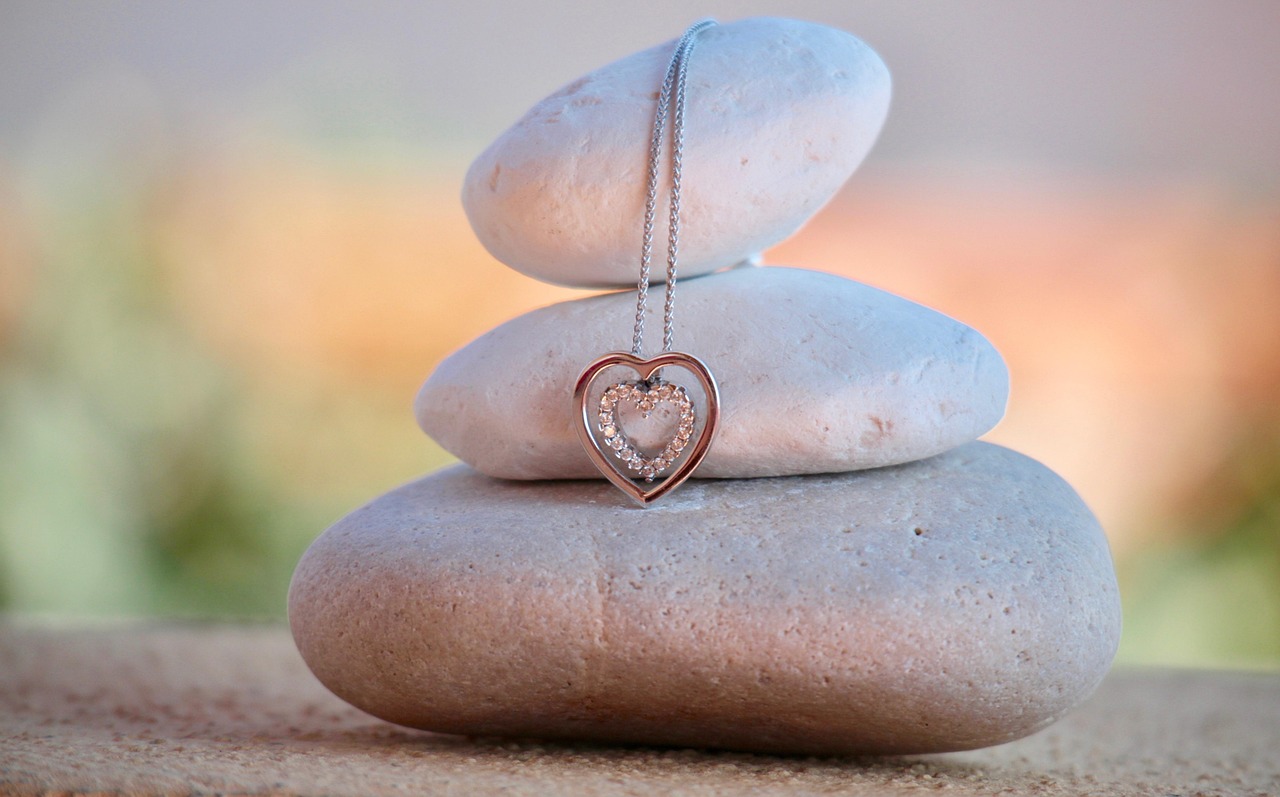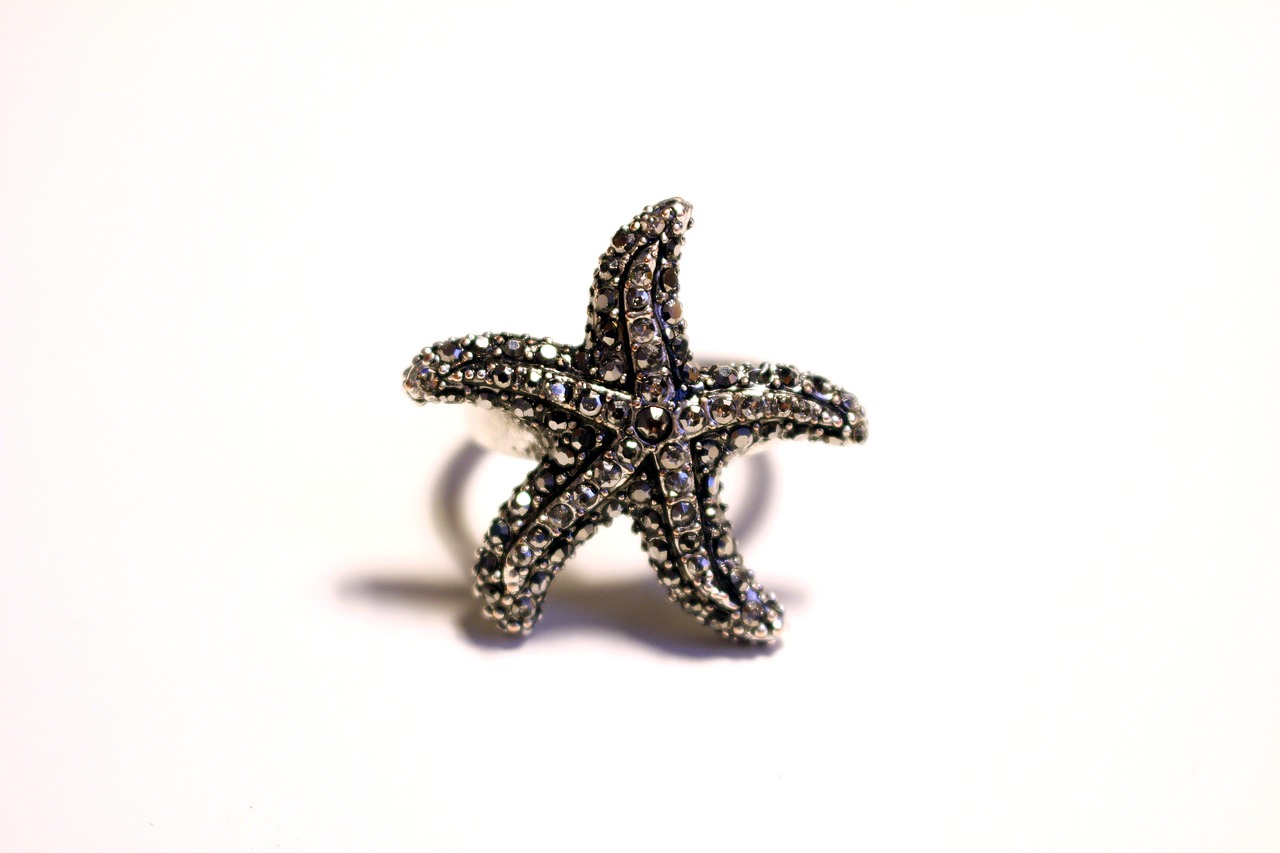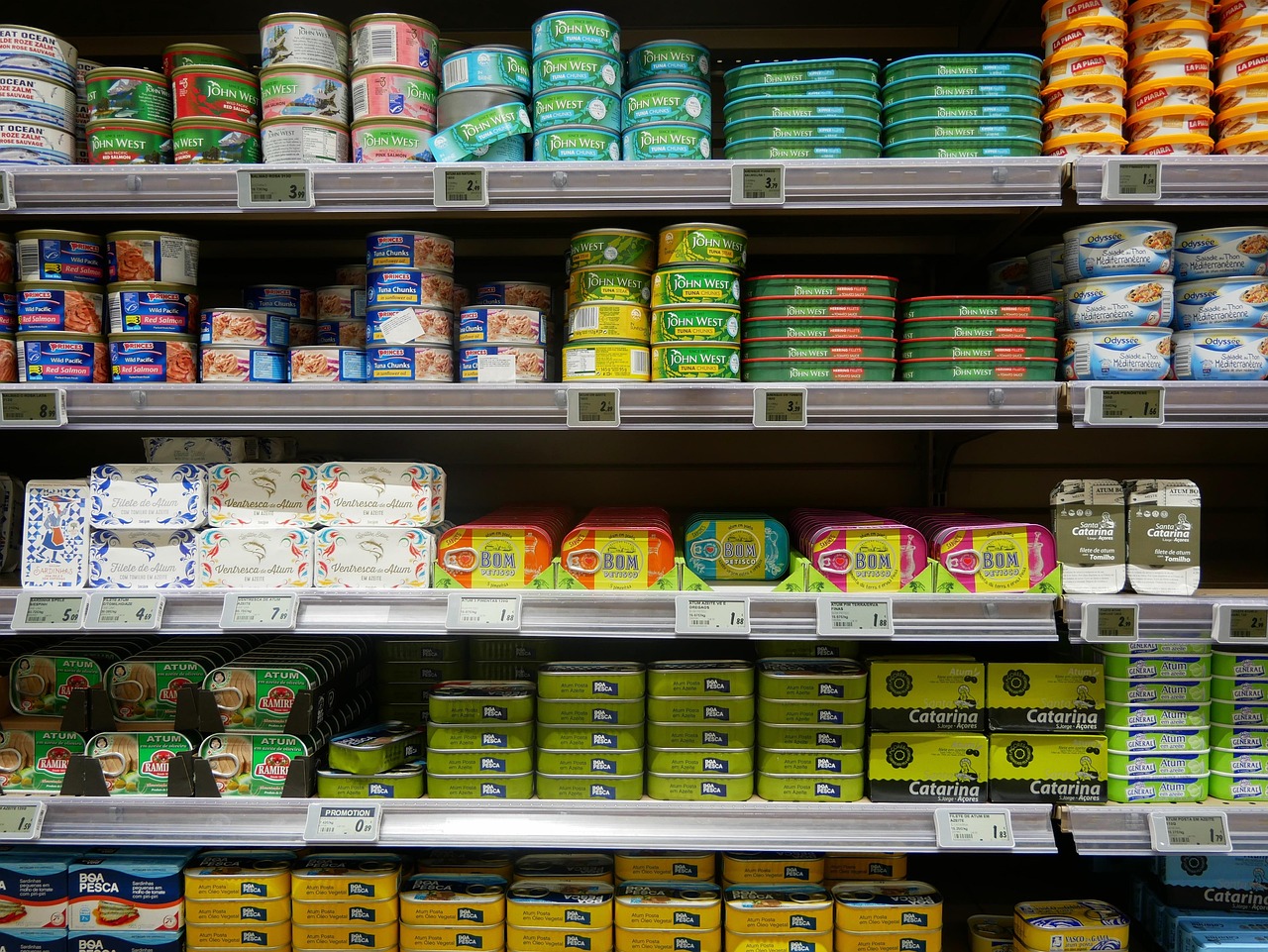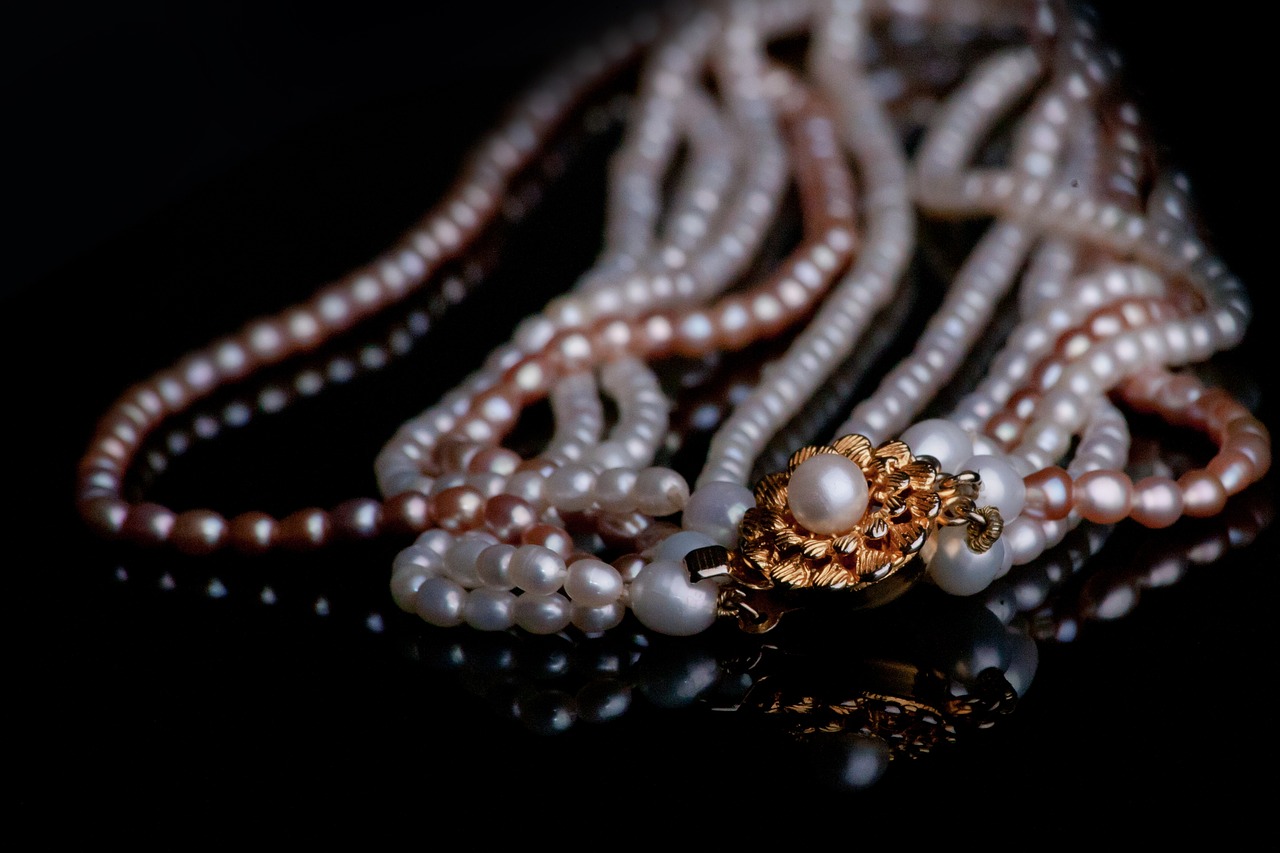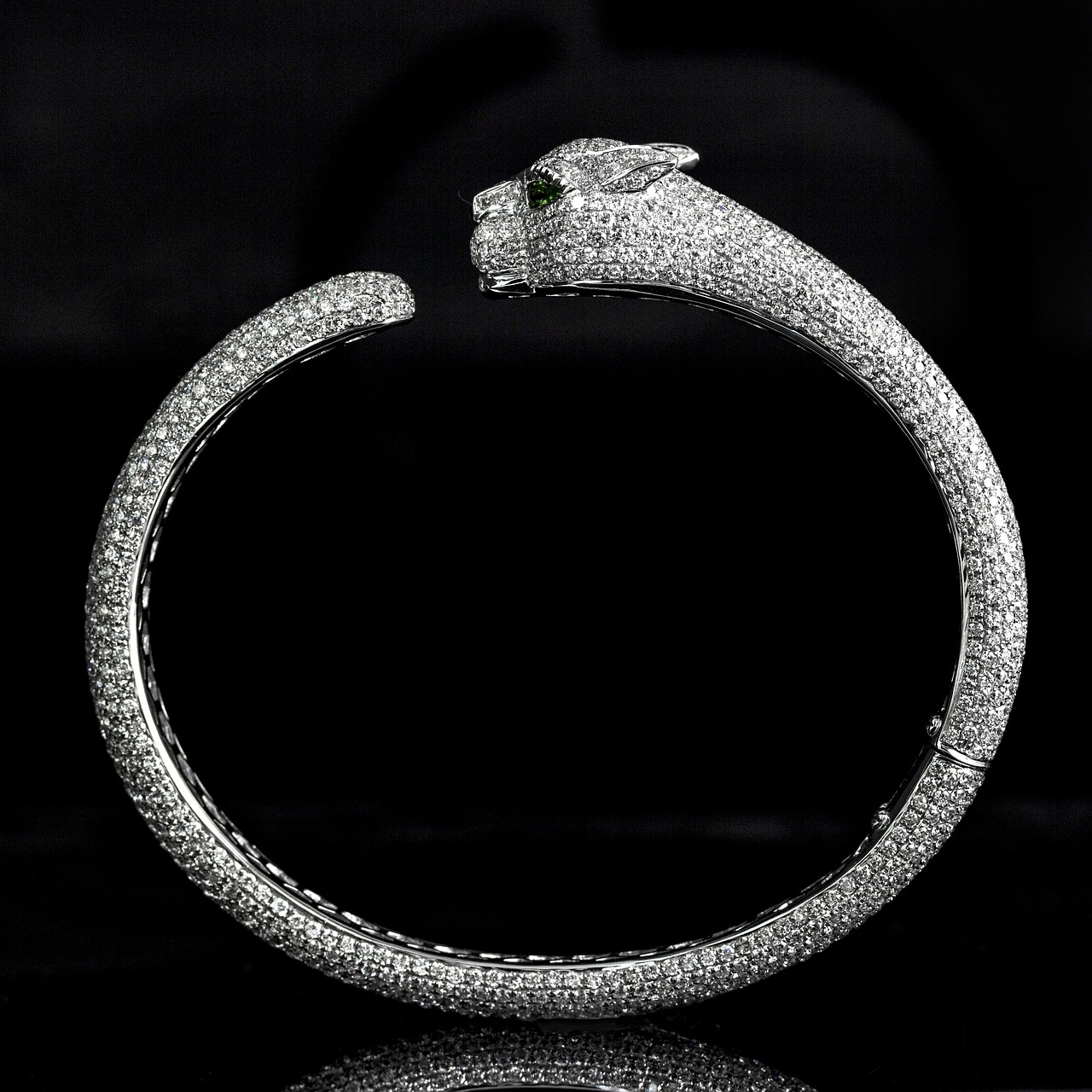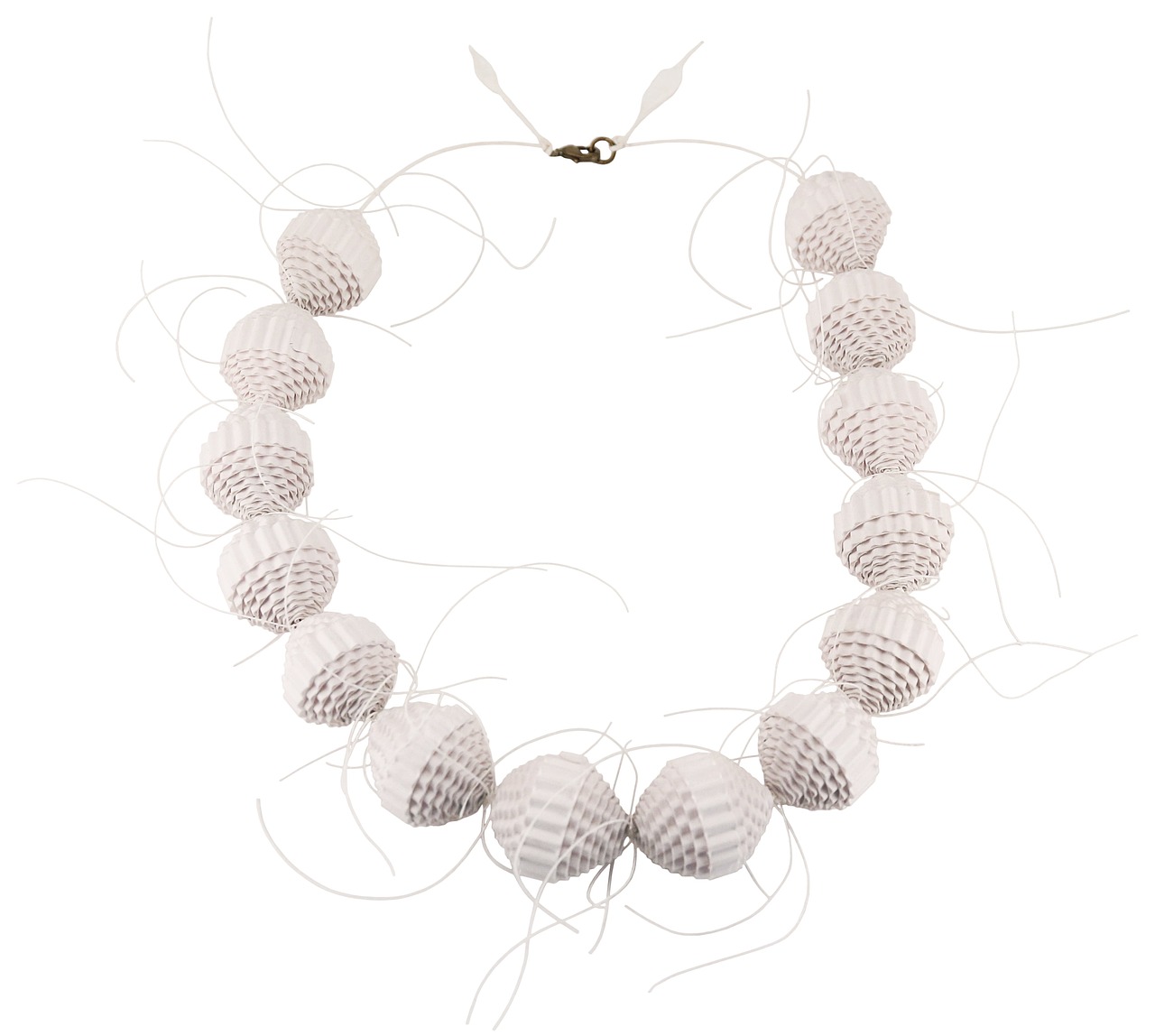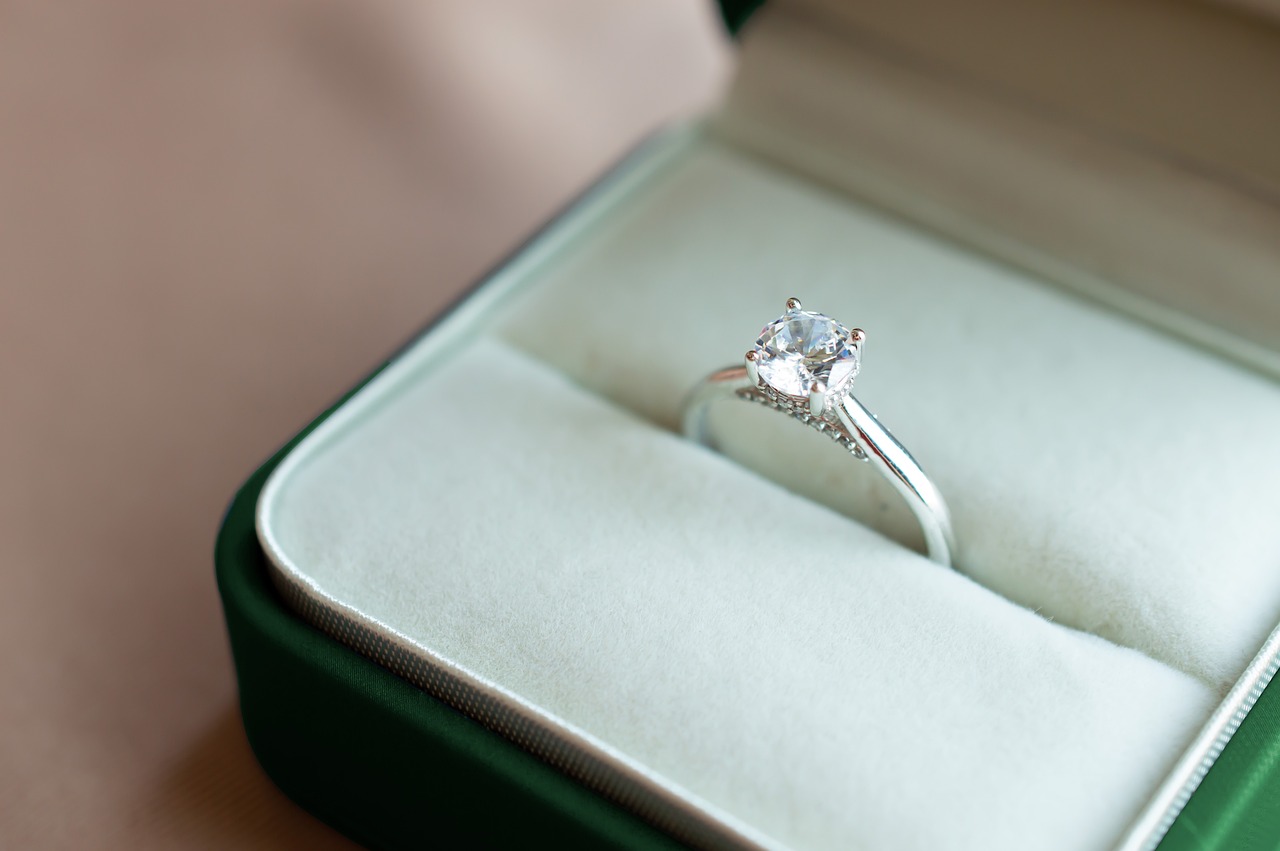delves into the multifaceted world of opulent adornments that have transcended mere decoration to become symbols of wealth, power, and cultural identity. This article provides a comprehensive overview of luxury jewelry’s significance, tracing its roots through history, its impact on contemporary culture, and the trends shaping its future.
Luxury jewelry is distinguished by its exquisite craftsmanship, premium materials, and exclusive designs. The definition of luxury jewelry encompasses several key elements:
- Brand Reputation: Renowned brands often carry a legacy of quality and prestige.
- Rarity: Limited editions and unique pieces enhance desirability.
- Artistry: Exceptional design and meticulous attention to detail are hallmarks of luxury.
The journey of luxury jewelry reflects broader societal changes and artistic movements. From the ornate pieces worn by royalty in ancient civilizations to the sleek, modern designs of today, the evolution of luxury jewelry mirrors the cultural shifts and technological advancements of each era. Key milestones include:
- The use of precious metals and gemstones in ancient cultures.
- The Renaissance, which introduced innovative techniques and styles.
- The Art Deco movement, celebrated for its geometric designs and bold colors.
In high society, luxury jewelry serves as a powerful status symbol. It is often used as a means of self-expression and a way to reinforce social stratification. The ownership of high-end pieces signifies not just wealth but also cultural capital, as jewelry communicates personal taste and social standing among peers.
Today’s luxury jewelry market is characterized by a blend of traditional craftsmanship and modern innovation. Current trends include:
- Sustainable Practices: An increasing number of consumers are prioritizing ethically sourced materials.
- Personalization: Custom pieces that reflect individual stories and identities are gaining popularity.
- Tech Integration: Smart jewelry that combines fashion with technology is emerging as a new frontier.
Luxury jewelry plays a pivotal role in the fashion industry, influencing trends and styles. Designer collaborations often result in exclusive collections that captivate consumers. Moreover, high-profile events such as award shows and red carpet appearances significantly shape public perception, making luxury jewelry an integral part of the fashion narrative.
Celebrity endorsements have a profound impact on luxury jewelry sales. High-profile figures often serve as brand ambassadors, influencing consumer choices and shaping marketing strategies. The allure of wearing the same pieces as beloved stars can drive demand and elevate a brand’s status.
Luxury jewelry is not only a personal adornment but also plays a significant role in cultural celebrations. It is often featured in:
- Weddings: Exquisite pieces symbolize love and commitment.
- Anniversaries: Milestone celebrations often involve heirloom jewelry.
- Cultural Rituals: Jewelry can signify important rites of passage, reflecting cultural heritage.
Investing in luxury jewelry can be financially rewarding. Many pieces appreciate over time, making them not just adornments but also valuable assets. Factors to consider include:
- Market Trends: Understanding current demand and future predictions can guide investment choices.
- Expert Advice: Consulting with jewelers and appraisers can help in selecting pieces with high investment potential.
Proper care and maintenance are essential for preserving the beauty and value of luxury jewelry. Tips include:
- Cleaning: Regular cleaning with appropriate materials can prevent tarnishing.
- Storage: Keeping pieces in a safe, dry place helps avoid damage.
- Professional Maintenance: Periodic checks by a jeweler can ensure settings and stones remain secure.

What Defines Luxury Jewelry?
Luxury jewelry is not merely an accessory; it is a statement of elegance and a reflection of individual identity. The allure of luxury jewelry lies in its exquisite craftsmanship, premium materials, and exclusive designs that set it apart from mass-produced items. In this section, we will explore the various elements that contribute to the luxury status of jewelry, including brand reputation, rarity, and the emotional connection it fosters.
- Exquisite Craftsmanship: Luxury jewelry is often handcrafted by skilled artisans who pay meticulous attention to detail. Each piece undergoes a rigorous process of design and production, ensuring that it meets the highest standards of quality.
- Premium Materials: The use of high-quality materials such as gold, platinum, and precious gemstones is a hallmark of luxury jewelry. These materials not only enhance the aesthetic appeal but also contribute to the durability and longevity of the pieces.
- Exclusive Designs: Luxury jewelry brands often offer unique designs that are not available to the general public. This exclusivity adds to the allure and desirability of the pieces, making them coveted items among collectors and enthusiasts.
- Brand Reputation: Established luxury brands carry a legacy that enhances the perceived value of their jewelry. Consumers often associate these brands with prestige, quality, and a rich history, making their pieces more desirable.
- Rarity: Limited-edition pieces or those featuring rare gemstones are highly sought after. The scarcity of these items elevates their status, making them symbols of wealth and exclusivity.
Luxury jewelry often holds significant emotional value for the wearer. Many pieces are passed down through generations, becoming family heirlooms that carry stories and memories. This emotional connection enhances the value of the jewelry beyond its material worth, making it a cherished possession.
Current trends in luxury jewelry reflect a blend of tradition and innovation. As consumers become more conscious of sustainability, many luxury brands are adopting ethical sourcing practices. This shift not only meets consumer demand but also enhances the brand’s reputation and commitment to social responsibility.
Cultural factors significantly influence the design and significance of luxury jewelry. Different cultures have unique traditions and practices surrounding jewelry, often using it to mark milestones such as weddings, anniversaries, and other celebrations. Understanding these cultural contexts can enhance appreciation for the artistry and meaning behind each piece.
In summary, luxury jewelry is defined by a confluence of craftsmanship, materials, and design. Its value is further amplified by the emotional connections it fosters and the cultural narratives it embodies. As trends evolve and consumer preferences shift, the luxury jewelry market continues to adapt, ensuring that it remains a significant aspect of high society and personal expression.
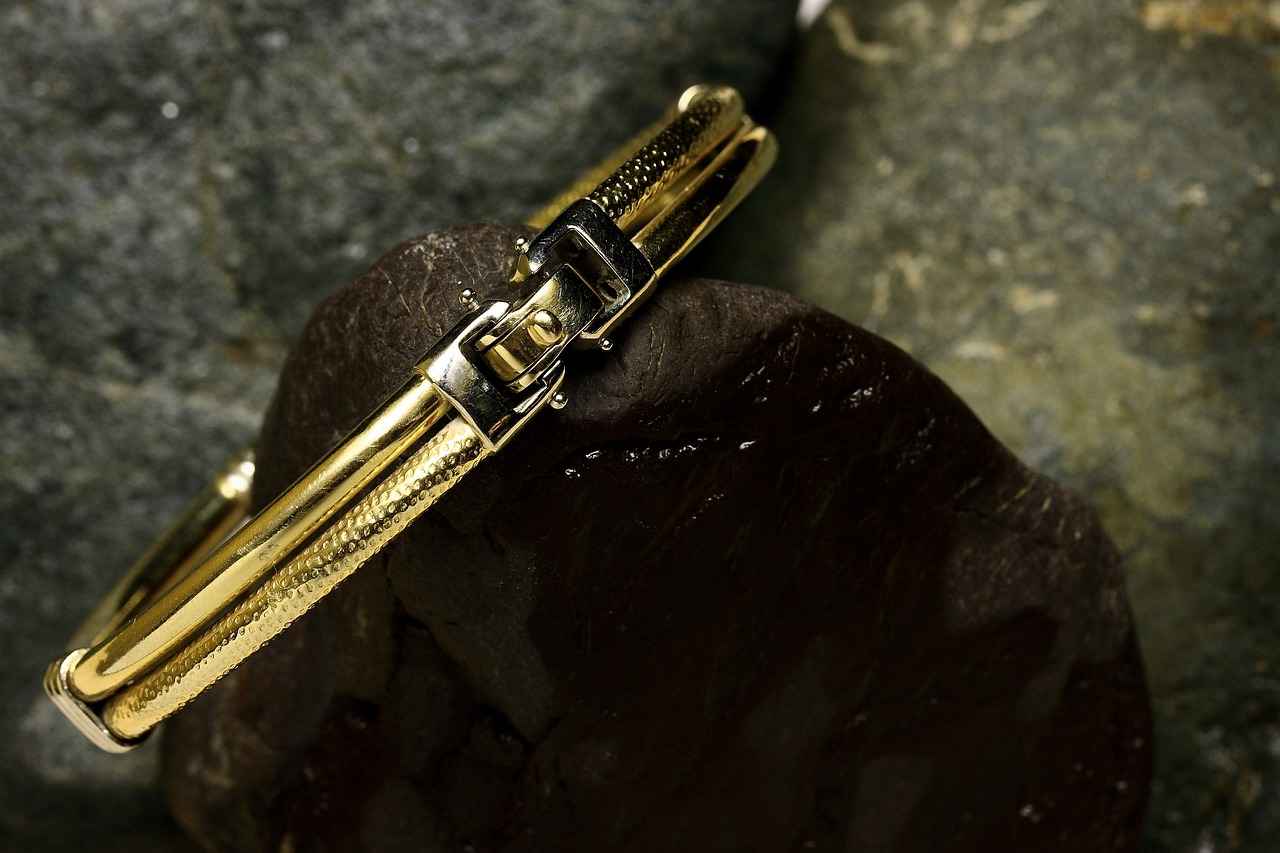
How Has Luxury Jewelry Evolved Over Time?
The evolution of luxury jewelry is a fascinating journey that mirrors the changes in society, culture, and artistry throughout history. From its origins as symbols of power and prestige to its current status as a form of personal expression and investment, luxury jewelry has undergone significant transformations.
In ancient times, jewelry served more than just an aesthetic purpose; it was a representation of wealth and social status. Royal families adorned themselves with intricate pieces made from precious metals and gemstones to signify their power. For instance, the use of gold and diamonds in ancient Egypt not only showcased the wealth of the pharaohs but also their divine connection. As cultures evolved, so did the styles and significance of jewelry.
The Renaissance period marked a pivotal moment in jewelry design, with artists and craftsmen drawing inspiration from nature and mythology. This era saw the emergence of enamel work and the use of colored gemstones, leading to more elaborate and artistic designs. The Art Nouveau movement further pushed boundaries, emphasizing organic forms and intricate details, which allowed jewelers to express their creativity.
The Industrial Revolution drastically changed the landscape of jewelry production. Mass production techniques made jewelry more accessible to the general public, while still maintaining a range of luxury items for the elite. This era introduced new materials, such as platinum, and innovations like the diamond-cutting machine, which enhanced the brilliance of diamonds and made them more desirable.
In the contemporary world, technology has revolutionized the way luxury jewelry is designed and produced. Computer-aided design (CAD) allows for intricate designs that were once impossible to achieve by hand. Additionally, advancements in 3D printing have enabled jewelers to create unique pieces quickly and efficiently. This technological evolution has not only enhanced creativity but has also led to more sustainable practices within the industry.
- The Rise of Celebrity Influence: In recent decades, celebrities have played a significant role in shaping trends and popularizing luxury brands. Their endorsements often lead to increased visibility and desirability.
- The Focus on Ethical Sourcing: Modern consumers are increasingly concerned about the origins of their jewelry. The demand for ethically sourced gemstones has prompted many luxury brands to adopt sustainable practices.
- The Customization Trend: Today’s consumers seek personalized experiences. Custom-made jewelry has gained popularity, allowing individuals to express their unique style and preferences.
In summary, the evolution of luxury jewelry is a testament to the dynamic interplay between societal changes, artistic movements, and technological advancements. As we move forward, luxury jewelry continues to adapt, reflecting the values and aspirations of each generation while maintaining its status as a symbol of elegance and prestige.

Why Is Luxury Jewelry a Status Symbol?
Luxury jewelry has long been associated with wealth, prestige, and social stratification. In high society, the adornment of exquisite pieces serves not merely as a fashion statement but as a powerful tool for self-expression and identity. This section delves into the intricate relationship between luxury jewelry and social status, illustrating how these opulent adornments reinforce hierarchies among peers.
At its core, luxury jewelry embodies a unique blend of artistry and exclusivity. The craftsmanship involved in creating these pieces often involves skilled artisans who dedicate countless hours to perfecting their work. The use of rare materials such as diamonds, emeralds, and gold not only enhances the aesthetic appeal but also elevates the piece to a status symbol. High society individuals often choose jewelry that reflects their personal taste while simultaneously signaling their wealth and success to others.
Moreover, luxury jewelry acts as a social currency. In many elite circles, the type and quality of jewelry one wears can dictate social interactions and influence perceptions. For instance, wearing a renowned designer’s piece can open doors to exclusive events and networks, reinforcing the wearer’s status. In this way, jewelry becomes a visual representation of one’s place within the social hierarchy.
Additionally, luxury jewelry is often linked to significant life events, such as engagements, weddings, and anniversaries. These occasions provide an opportunity for individuals to showcase their wealth and commitment through extravagant pieces. The tradition of gifting high-value jewelry during such milestones not only signifies love and devotion but also serves as a public declaration of one’s financial capability and social standing.
In contemporary society, the influence of social media and celebrity culture has further amplified the status associated with luxury jewelry. High-profile figures often showcase their lavish collections on platforms like Instagram, creating a ripple effect that inspires followers to aspire to similar standards of luxury. This phenomenon not only drives demand for certain brands but also cultivates a culture where luxury jewelry becomes synonymous with success and desirability.
Furthermore, the emotional connection that individuals have with their jewelry cannot be overlooked. Many pieces are passed down through generations, becoming family heirlooms that carry stories and memories. This aspect of luxury jewelry enhances its value, both sentimental and financial, solidifying its role as a status symbol. Owning such pieces often signifies not just wealth but also a rich family history and legacy.
In conclusion, luxury jewelry serves as a multifaceted symbol of status within high society. It encapsulates the essence of wealth, craftsmanship, and personal identity while reinforcing social hierarchies. As society evolves, so too will the significance of luxury jewelry, but its role as a marker of prestige and self-expression remains steadfast.
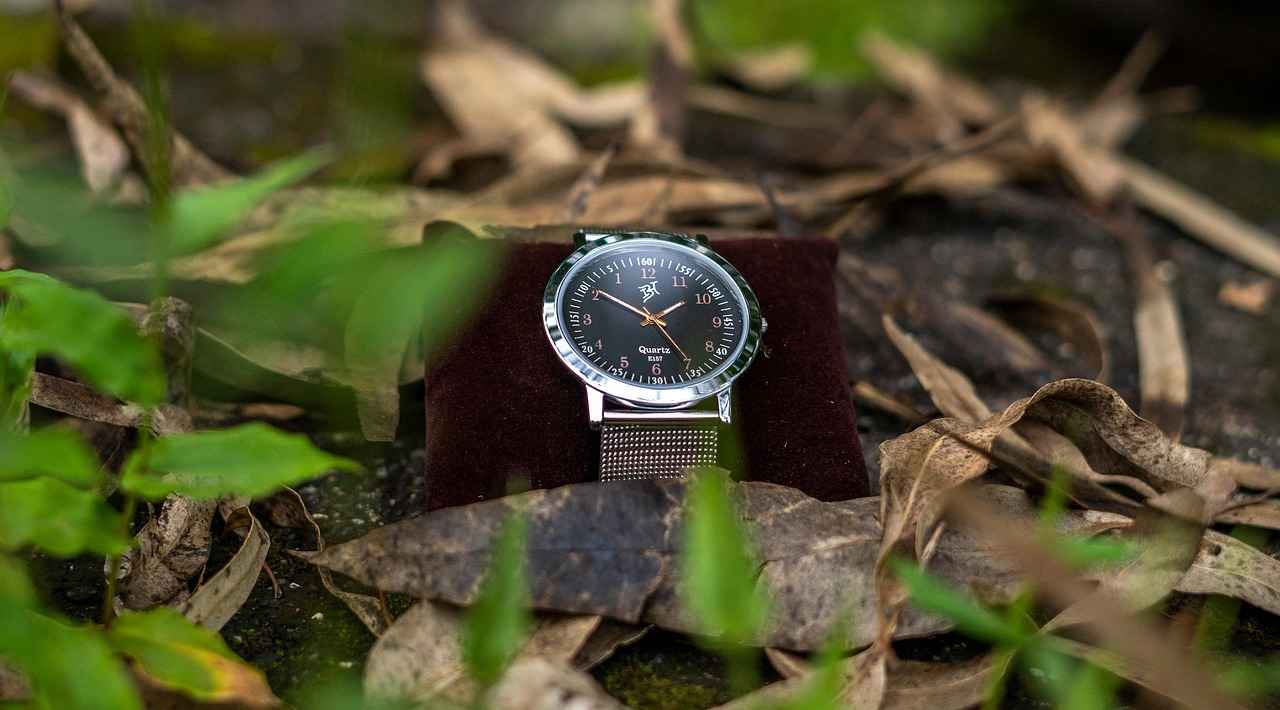
What Are the Current Trends in Luxury Jewelry?
In the ever-evolving world of luxury jewelry, current trends reflect a blend of traditional craftsmanship and modern innovation. As consumers become more conscious of their purchasing decisions, the luxury jewelry market is adapting to incorporate sustainability and ethically sourced materials into its offerings. This article explores the latest styles, materials, and the increasing demand for responsibly sourced gemstones.
Today’s luxury jewelry showcases cutting-edge designs that push the boundaries of creativity. Designers are experimenting with unique shapes and unconventional materials, resulting in pieces that are not only stunning but also one-of-a-kind. Bold statement pieces, such as oversized rings and intricate necklaces, are gaining popularity, often featuring asymmetrical designs that challenge traditional aesthetics.
As environmental awareness grows, many luxury brands are adopting sustainable practices in their production processes. This includes using recycled metals and lab-grown diamonds, which significantly reduce the environmental impact associated with mining. Consumers are increasingly drawn to brands that prioritize eco-friendly initiatives, making sustainability a key factor in purchasing decisions.
The demand for ethically sourced gemstones is on the rise as consumers seek transparency in the origins of their jewelry. High-end brands are responding by ensuring that their gemstones are conflict-free and sourced from reputable suppliers. This shift not only promotes ethical practices within the industry but also enhances the emotional value of the pieces, as buyers feel a connection to the story behind their jewelry.
- Vintage-Inspired Designs: Nostalgia plays a significant role in current trends, with many luxury pieces drawing inspiration from past eras, such as Art Deco and Victorian styles.
- Mixed Materials: Combining different metals and materials, such as gold with ceramic or wood, creates a striking contrast that appeals to contemporary tastes.
- Colorful Gemstones: Vibrant gemstones, including sapphires, emeralds, and rubies, are being used more frequently, adding a pop of color to traditional diamond-centric designs.
Technology is transforming the luxury jewelry landscape, with advancements in 3D printing and computer-aided design (CAD) allowing for intricate detailing that was previously unattainable. This not only streamlines the production process but also enables designers to create highly customized pieces that cater to individual tastes.
With the rise of luxury jewelry as a status symbol, many consumers are viewing these pieces as investment opportunities. High-quality jewelry often appreciates over time, making it a wise financial decision. Collectors are particularly interested in limited-edition pieces and those from well-known designers, as these tend to hold their value or even increase significantly.
In summary, the current trends in luxury jewelry reflect a dynamic interplay between innovation, sustainability, and consumer demand for ethical practices. As the industry continues to evolve, it will be fascinating to see how these trends shape the future of luxury adornments.
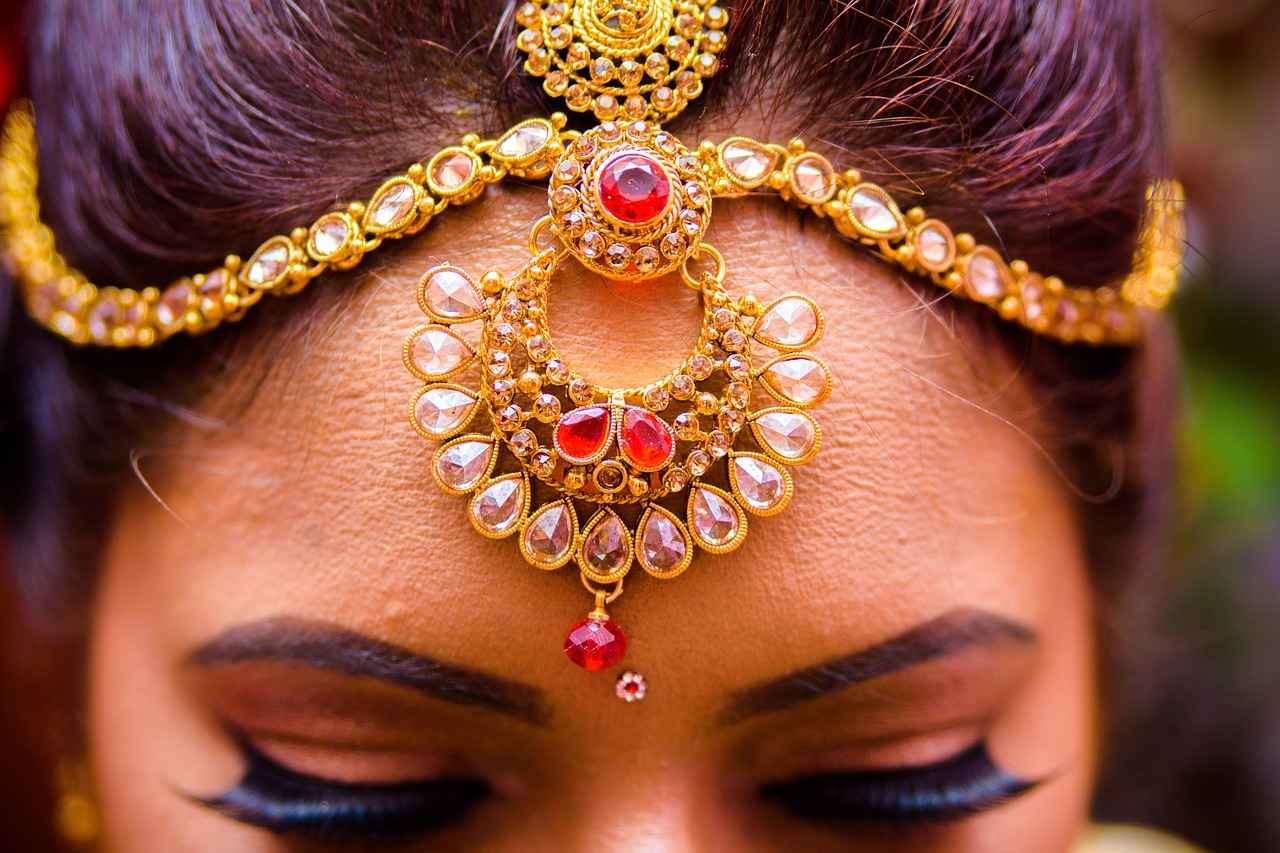
How Does Luxury Jewelry Influence Fashion?
Luxury jewelry is not merely an accessory; it is a powerful influencer in the fashion industry. From the glimmering runways of fashion shows to the dazzling red carpets of high-profile events, luxury jewelry shapes perceptions and trends alike. This article delves into the multifaceted role luxury jewelry plays in fashion, exploring its influence on trends, designer collaborations, and the impact of celebrity endorsements.
The emergence of luxury jewelry trends is often a reflection of broader fashion movements. Designers integrate unique materials and innovative designs, which in turn influence what consumers desire. For instance, the resurgence of vintage styles has reignited interest in art deco and retro jewelry, leading to a demand for pieces that echo past elegance while incorporating modern aesthetics.
Collaborations between luxury jewelry brands and fashion designers are a significant catalyst for trend development. These partnerships often result in exclusive collections that blend the essence of both parties, captivating audiences and creating buzz. For example, when a renowned fashion house teams up with a prestigious jewelry brand, the resulting pieces become highly coveted, often selling out within hours. Such collaborations not only enhance brand visibility but also set new standards in luxury fashion.
High-profile events, such as the Met Gala or the Academy Awards, serve as platforms where luxury jewelry takes center stage. Celebrities often adorn themselves with exquisite pieces, showcasing the latest trends and sparking public interest. The jewelry worn at these events frequently becomes a topic of conversation, influencing consumer choices and shaping perceptions of luxury. For instance, when a star wears a unique piece, it can lead to a surge in demand for similar styles, demonstrating the symbiotic relationship between luxury jewelry and celebrity culture.
Celebrity endorsements play a crucial role in the marketing strategies of luxury jewelry brands. When high-profile figures showcase jewelry, it not only elevates the piece’s status but also connects the brand with the celebrity’s fan base. This relationship can significantly boost sales, as consumers aspire to emulate their favorite stars. The influence of social media further amplifies this effect, with platforms like Instagram and TikTok showcasing luxury pieces to millions, creating a new wave of fashion influencers.
Current trends in luxury jewelry reflect a growing emphasis on sustainability and ethical sourcing. Consumers are increasingly aware of the environmental impact of their purchases, leading to a demand for ethically sourced gemstones and eco-friendly materials. Designers are responding by creating collections that prioritize sustainability without compromising on style. Additionally, personalization in jewelry design is gaining popularity, as consumers seek unique pieces that tell their personal stories.
Luxury jewelry enhances fashion statements by adding an element of sophistication and elegance. A well-chosen piece can transform a simple outfit into a stunning ensemble, making it a vital component of personal style. Whether it’s a statement necklace, intricate earrings, or a classic bracelet, these pieces allow individuals to express their personalities and social standing. The right jewelry can elevate any look, making it a crucial aspect of fashion.
In conclusion, luxury jewelry is an integral part of the fashion industry, influencing trends, shaping public perception, and enhancing personal style. Its role as a status symbol and investment continues to evolve, reflecting societal changes and consumer preferences. As the industry progresses, the relationship between luxury jewelry and fashion will undoubtedly grow stronger, paving the way for innovative designs and sustainable practices.

What Role Does Celebrity Endorsement Play?
Celebrity endorsements have become a cornerstone of marketing strategies in the luxury jewelry sector. The presence of high-profile figures in advertising campaigns not only boosts brand visibility but also significantly influences consumer purchasing decisions. This section delves into the profound impact that celebrities have on luxury jewelry sales and the underlying marketing tactics that luxury brands employ to capitalize on their star power.
Luxury jewelry brands often collaborate with celebrities who embody the essence of their brand ethos. These endorsements are not merely about having a famous face; they are about creating a narrative that resonates with potential buyers. For instance, when a beloved actress wears a stunning diamond necklace at a major award show, it can spark a surge in consumer interest and demand for similar pieces. This phenomenon is driven by the psychology of aspiration, where consumers are drawn to the lifestyles and aesthetics of their favorite stars.
Moreover, the social media landscape has transformed how celebrity endorsements function. Platforms like Instagram and TikTok allow celebrities to showcase luxury jewelry in a more personal and relatable manner. A simple post featuring a celebrity adorned in exquisite pieces can reach millions, creating a sense of exclusivity and desirability. This immediacy and accessibility amplify the impact of celebrity endorsements, making them a vital tool for luxury brands.
In addition to direct endorsements, many luxury jewelry brands engage in strategic partnerships with celebrities. These collaborations often result in limited-edition pieces that are co-designed or inspired by the celebrity’s personal style. Such partnerships not only enhance the brand’s appeal but also create a unique selling proposition that attracts consumers eager to own a piece of celebrity history.
Furthermore, the influence of celebrities extends beyond mere aesthetics. Many high-profile figures use their platforms to advocate for social causes, and when they align these causes with luxury jewelry brands, it can enhance the brand’s image and appeal. For example, a celebrity who supports sustainable practices may endorse a jewelry line that uses ethically sourced materials, thereby attracting a conscientious consumer base that values both luxury and responsibility.
Luxury brands must also navigate the potential risks associated with celebrity endorsements. A scandal involving a celebrity can lead to negative publicity and impact sales. Therefore, brands often conduct thorough research to ensure that their chosen ambassadors align with their values and public image. This careful selection process underscores the importance of maintaining a positive brand reputation in the luxury market.
In conclusion, the role of celebrity endorsement in luxury jewelry sales is multifaceted and deeply influential. From enhancing brand visibility to shaping consumer preferences, celebrities serve as powerful catalysts in the marketing landscape. As luxury jewelry brands continue to adapt to changing consumer behaviors and technological advancements, their strategies surrounding celebrity endorsements will likely evolve, further intertwining the worlds of fame and luxury.
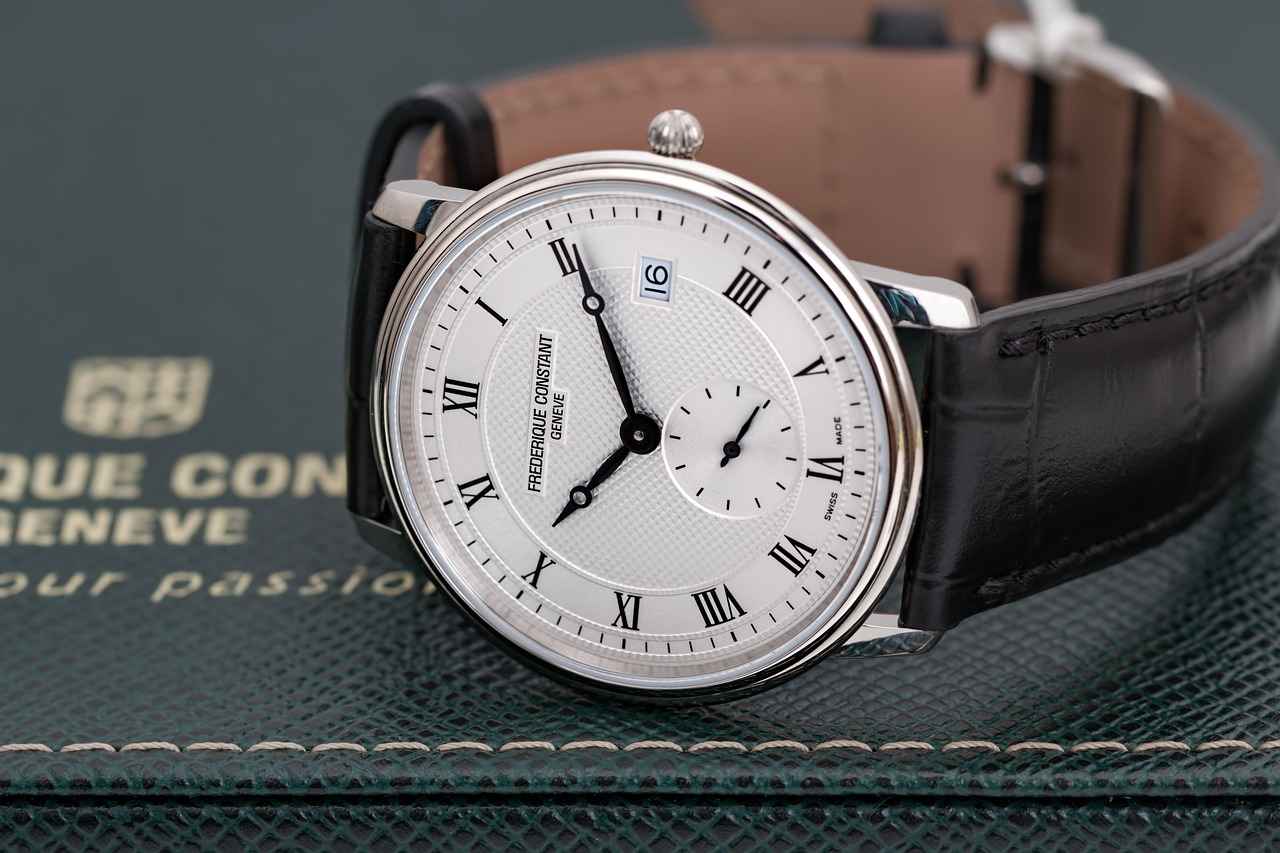
How Is Luxury Jewelry Used in Cultural Celebrations?
Luxury jewelry holds a revered place in cultural celebrations, serving not only as adornment but also as a symbol of heritage and tradition. From weddings to anniversaries and significant milestones, the presence of luxurious pieces enhances the emotional and cultural significance of these events.
In many cultures, jewelry is not merely an accessory; it is deeply intertwined with rituals and customs. For instance, in traditional weddings, the exchange of rings often symbolizes eternal love and commitment. These rings, often crafted from precious metals and adorned with gemstones, are chosen not just for their beauty but also for the stories they carry. Each piece can represent familial ties, cultural heritage, and even hopes for the future.
Moreover, anniversaries are another occasion where luxury jewelry plays a pivotal role. Couples often celebrate milestone anniversaries with gifts of exquisite jewelry, such as diamond earrings or gold bracelets, signifying the enduring nature of their relationship. These gifts are not only tokens of love but are also seen as investments in the couple’s shared journey, often passed down through generations.
| Occasion | Significance of Jewelry | Typical Pieces |
|---|---|---|
| Weddings | Symbolizes eternal love and commitment | Rings, necklaces, bracelets |
| Anniversaries | Celebrates enduring relationships | Diamond earrings, gold bracelets |
| Cultural Festivals | Showcases heritage and community pride | Traditional pieces, handmade jewelry |
In addition to personal milestones, luxury jewelry is often prominently featured in cultural festivals. These events celebrate community, heritage, and shared values. For example, during festivals, individuals may wear traditional jewelry that reflects their cultural identity, such as ornate necklaces or intricately designed earrings. These pieces not only enhance the festive attire but also serve as a reminder of one’s roots and the stories passed down through generations.
Furthermore, luxury jewelry often plays a role in rites of passage, such as graduations or coming-of-age ceremonies. In many cultures, gifting a significant piece of jewelry during these events symbolizes the transition into a new phase of life. This practice reinforces the importance of family and community, as well as the values and traditions that shape individual identities.
As society evolves, the role of luxury jewelry in cultural celebrations continues to adapt. Modern interpretations of traditional designs and the incorporation of sustainable materials reflect changing values and preferences. However, the underlying significance remains unchanged: luxury jewelry is a powerful expression of identity, love, and heritage.
In conclusion, luxury jewelry is more than just a beautiful accessory; it is a vital component of cultural celebrations. Its significance in weddings, anniversaries, and other milestones highlights the connection between personal expression and cultural heritage. As we continue to honor our traditions, the allure of luxury jewelry will undoubtedly remain an integral part of these cherished moments.

What Are the Investment Benefits of Luxury Jewelry?
Investing in luxury jewelry has become increasingly popular among discerning collectors and investors alike. This section delves into the multifaceted benefits of investing in high-end pieces, focusing on value appreciation, market trends, and expert tips for selecting jewelry that serves as both a stunning adornment and a sound investment.
The luxury jewelry market has shown a remarkable resilience, often outperforming traditional investments such as stocks and bonds. The potential for value appreciation is one of the primary reasons individuals consider luxury jewelry as an investment. Over time, certain pieces—especially those from renowned brands or featuring rare gemstones—can significantly increase in value. For instance, vintage pieces from iconic designers like Cartier or Van Cleef & Arpels have been known to appreciate by as much as 200% to 300% over a decade.
In addition to the intrinsic value of the materials used, the market trends surrounding luxury jewelry also play a crucial role in its investment potential. The growing demand for ethically sourced gemstones and sustainable practices has shifted consumer preferences, leading to a surge in interest for pieces that align with these values. Investors are advised to stay informed about these trends, as they can influence the future value of their collections.
When considering luxury jewelry as an investment, it is essential to seek expert advice. Renowned jewelers and appraisers can provide insights into which pieces are likely to appreciate in value. It’s vital to focus on attributes such as brand reputation, craftsmanship, and rarity. Additionally, investing in limited-edition pieces or those with historical significance can enhance the likelihood of substantial returns.
Another critical aspect to consider is the liquidity of luxury jewelry investments. Unlike stocks, which can be sold at any time, luxury jewelry requires a more strategic approach. Building relationships with reputable dealers and auction houses can facilitate smoother transactions when it comes time to sell. Furthermore, participating in jewelry auctions can yield higher returns, as buyers at these events are often willing to pay a premium for exclusive pieces.
To maximize the investment potential of luxury jewelry, proper care and maintenance are essential. Keeping pieces in pristine condition not only preserves their beauty but also ensures they maintain their value over time. Regular cleaning, appropriate storage, and timely appraisals can significantly impact the longevity and marketability of your collection.
In summary, investing in luxury jewelry offers a unique blend of beauty and potential financial reward. With the right knowledge and resources, collectors can navigate the intricacies of the market, making informed decisions that enhance both their aesthetic enjoyment and investment portfolio. As with any investment, thorough research and expert guidance are key to unlocking the true potential of luxury jewelry.
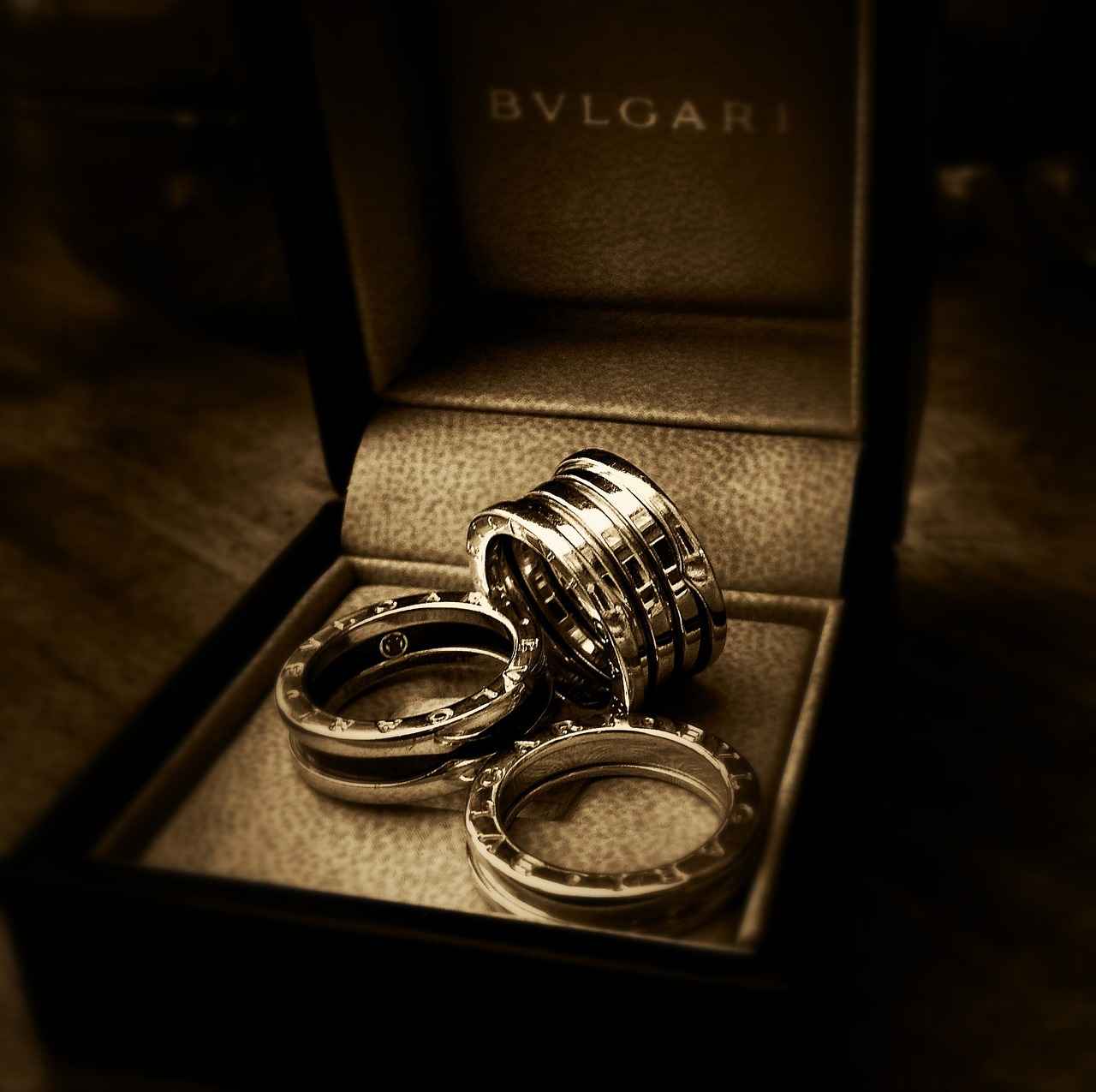
How Can One Care for Luxury Jewelry?
Luxury jewelry is not just an accessory; it is an investment that requires proper care and maintenance to preserve its beauty and value. The significance of luxury pieces goes beyond their aesthetic appeal; they often carry sentimental value and are passed down through generations. In this section, we will explore practical tips on how to clean, store, and protect your high-value jewelry, ensuring it remains in pristine condition over time.
Regular cleaning is essential to maintain the luster and shine of luxury jewelry. Dust, dirt, and oils from your skin can accumulate on the surface, dulling its appearance. Here are some cleaning tips:
- Use a soft cloth: Gently wipe your jewelry with a soft, lint-free cloth after each wear to remove oils and dirt.
- Gentle soap solution: For deeper cleaning, mix mild soap with warm water and soak your jewelry for a few minutes. Use a soft brush to clean hard-to-reach areas.
- Professional cleaning: Consider having your luxury jewelry professionally cleaned at least once a year to preserve its condition.
Proper storage is crucial in preventing scratches, tangles, and damage. Here are some effective storage solutions:
- Jewelry box: Invest in a high-quality jewelry box with separate compartments to keep pieces organized and prevent them from scratching each other.
- Anti-tarnish pouches: Use anti-tarnish pouches or cloths for silver jewelry to prevent tarnishing.
- Temperature and humidity: Store your jewelry in a cool, dry place away from direct sunlight to avoid damage from heat and moisture.
Protection is key to maintaining the integrity of luxury jewelry. Consider the following practices:
- Avoid exposure: Keep your jewelry away from harsh chemicals, such as household cleaners and beauty products, which can damage the finish.
- Remove before activities: Take off your jewelry before engaging in physical activities, swimming, or applying lotions and perfumes.
- Regular inspections: Periodically check for loose stones or signs of wear. Early detection can prevent costly repairs.
To ensure the longevity of your luxury pieces, it is essential to adopt a holistic approach to care. This involves:
- Educating yourself: Learn about the specific materials and gemstones in your jewelry to understand their care requirements.
- Creating a routine: Establish a regular cleaning and inspection routine to keep your jewelry in top condition.
- Documenting provenance: Keep receipts and certificates of authenticity, as they can add value and assist in insurance claims.
In conclusion, luxury jewelry deserves the utmost care and attention. By following these practical tips on cleaning, storing, and protecting your high-value pieces, you can ensure they retain their beauty and value for years to come. Remember, investing time in proper care not only enhances the longevity of your jewelry but also preserves its sentimental and financial value.
Frequently Asked Questions
- What defines luxury jewelry?
Luxury jewelry is all about exquisite craftsmanship, premium materials, and exclusive designs. It’s not just about wearing something pretty; it’s about showcasing artistry and uniqueness that sets it apart from regular jewelry.
- How has luxury jewelry evolved over time?
Luxury jewelry has a rich history that mirrors societal changes. From royal adornments in ancient times to the modern masterpieces we see today, its evolution is a fascinating journey through different artistic movements and cultural influences.
- Why is luxury jewelry considered a status symbol?
In high society, luxury jewelry often acts as a tool for self-expression and a marker of social standing. When you wear a stunning piece, it’s not just jewelry; it’s a statement about who you are and where you stand in the social hierarchy.
- What are the current trends in luxury jewelry?
Today’s luxury jewelry trends focus on innovative designs and sustainable practices. Consumers are increasingly drawn to pieces that are not only beautiful but also ethically sourced, reflecting a growing demand for responsibility in luxury.
- How does celebrity endorsement influence luxury jewelry?
Celebrity endorsements can skyrocket the popularity of luxury jewelry brands. When a high-profile figure flaunts a piece, it often becomes the must-have item for fans, showcasing the powerful link between fame and consumer choices.

